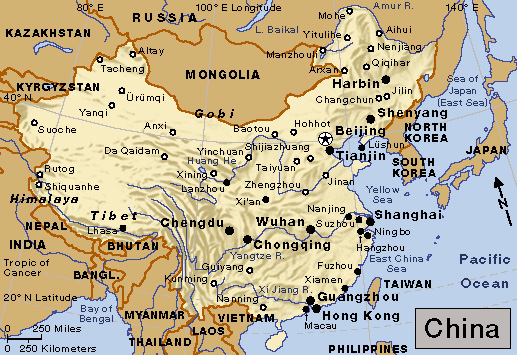Harbin, << hahr bihn or hah uhr bihn >> (pop. 5,550,000), is the capital of Heilongjiang province in China’s Northeast region (sometimes called Manchuria).

Harbin is an important railway center for the Northeast. Rail lines extend from Harbin to the Russian border in the northwest and east, and to Dalian and the Korean border in the south. Harbin’s location on the Sungari River makes it an important port. The fertile soil in the area is used to grow corn, soybeans, and wheat. Harbin’s chief agricultural exports are soybean products and wheat flour. Manufactured products include agricultural implements, chemicals, and leather.
People lived in villages in the region for thousands of years. In 1898, Russia began using Harbin as a base to build a railway across northeastern China as part of the Trans-Siberian Railroad. Harbin has many Russian-style buildings that date from this time. After Japan defeated Russia in the Russo-Japanese War (1904-1905), China and Japan controlled Harbin jointly. Many Russians fled to the city after the Russian Revolution of 1917. Japan took over Harbin from 1932 until 1945, when China again gained control. Russian tourism and trade increased in Harbin in the late 1900’s.
